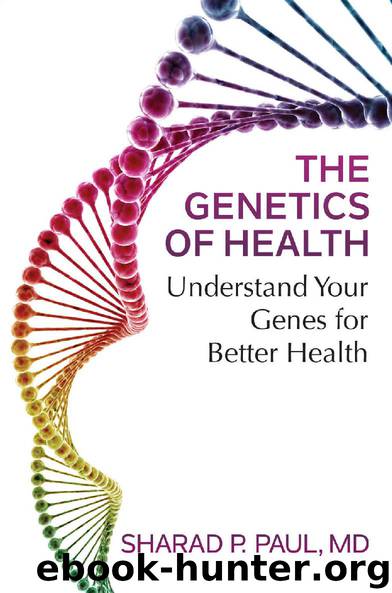The Genetics of Health: Understand Your Genes for Better Health by Sharad P. Paul

Author:Sharad P. Paul [Paul, Sharad P.]
Language: eng
Format: epub
Publisher: Atria Books/Beyond Words
Published: 2017-04-03T22:00:00+00:00
The Changing Face of Cholesterol Research
Ernest Becker, in The Denial of Death, wrote that man “is a creator with a mind that soars out to speculate about atoms and infinity [and] yet, at the same time . . . man is a worm and food for worms.”35 There is no place to investigate atoms (or worms, it seems) like Oxford University, the oldest English-speaking university.
Whenever I’m in the United Kingdom, I make time to visit Keble College, Oxford University, and its able warden, my good friend Jonathan (Sir Jonathan Phillips), who always makes me feel at home. The last time I was there, Jonathan arranged a dinner at the warden’s lodgings in my honor but neglected to mention that I was expected to make a speech. It may not have been my best speech, but in true Tractarian Keble tradition, it was a memorable and venerable experience.
At the dinner, I met a young Bengali lad studying worms for insight into human longevity. He had an inquiring mind, and we had a discussion about the work he was involved with. He was studying Caenorhabditis elegans, the nonparasitic nematode worm, which has become the new darling of scientists studying organ development, cell death, behavior, and many other biological processes. This one-millimeter soil worm is anatomically simple, easily cultivated in petri dishes, and has a body containing just over one thousand cells, including a 302-cell nervous system. Due to its small size, the entire neuronal circuitry can be studied and possibly reproduced. It has recently been used to produce models for both neuroscience and robotics. The transparency of the worm’s body, the constancy of cell numbers, and the constancy of cell position from individual to individual are unique characteristics that make this worm so heavily studied in medicine and biology.
In 2001, when the details of the human genome were published, everyone was astounded to see that human beings comprised only around thirty thousand genes—far fewer than the originally predicted 150,000. And guess what? Caenorhabditis elegans, this tiny worm, contained around nineteen thousand genes. Humans and this worm share around nineteen thousand genes!
Worms ended up becoming entwined in cholesterol research almost by accident because while they need cholesterol to survive, they cannot produce cholesterol themselves. Nematode worms need cholesterol to leave a stage of their life cycle called the dauer stage, which is essentially a form of hibernation, so in controlling the worm’s access to cholesterol and the various biochemical mediators, scientists are able to study the role of cholesterol. For example, in parasitic worms, molecules derived from cholesterol are actually what tell a worm that it has passed biological borders and is now resident inside a host’s body; these worms (and many other parasitic microbes) have cholesterol-sensing receptors. If only humans had these sensors—we’d save a fortune on cardiologists’ bills.
Today, it is widely accepted in the medical community that cholesterol worsens heart disease, as do other factors like smoking, high blood pressure, and a lack of exercise. But cholesterol was virtually unknown barely a century ago. In 1913, Nikolaj N.
Download
This site does not store any files on its server. We only index and link to content provided by other sites. Please contact the content providers to delete copyright contents if any and email us, we'll remove relevant links or contents immediately.
Sapiens: A Brief History of Humankind by Yuval Noah Harari(14171)
Sapiens by Yuval Noah Harari(5268)
Pale Blue Dot by Carl Sagan(4865)
Homo Deus: A Brief History of Tomorrow by Yuval Noah Harari(4781)
Livewired by David Eagleman(3626)
Origin Story: A Big History of Everything by David Christian(3594)
Brief Answers to the Big Questions by Stephen Hawking(3320)
Inferior by Angela Saini(3213)
Origin Story by David Christian(3121)
The Gene: An Intimate History by Siddhartha Mukherjee(3014)
Signature in the Cell: DNA and the Evidence for Intelligent Design by Stephen C. Meyer(3002)
The Evolution of Beauty by Richard O. Prum(2918)
Aliens by Jim Al-Khalili(2767)
How The Mind Works by Steven Pinker(2700)
A Short History of Nearly Everything by Bryson Bill(2585)
Sex at Dawn: The Prehistoric Origins of Modern Sexuality by Ryan Christopher(2444)
From Bacteria to Bach and Back by Daniel C. Dennett(2426)
Endless Forms Most Beautiful by Sean B. Carroll(2404)
Who We Are and How We Got Here by David Reich(2377)
